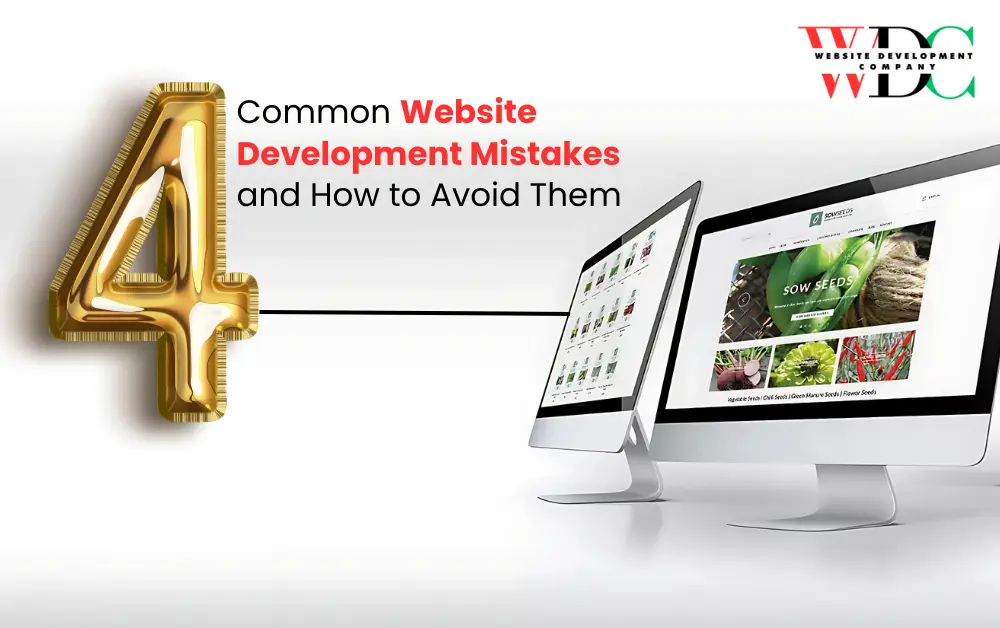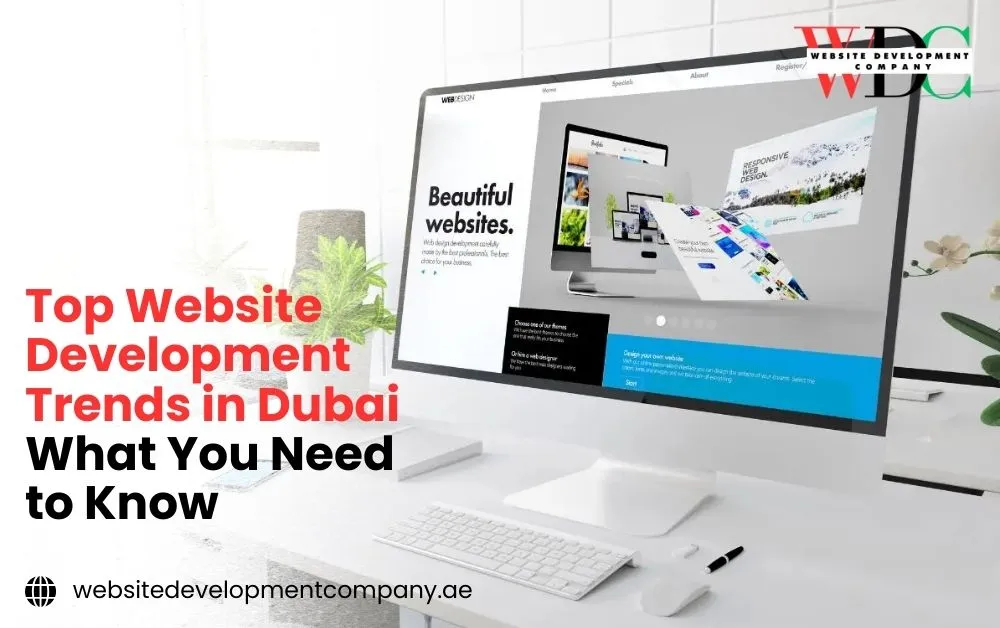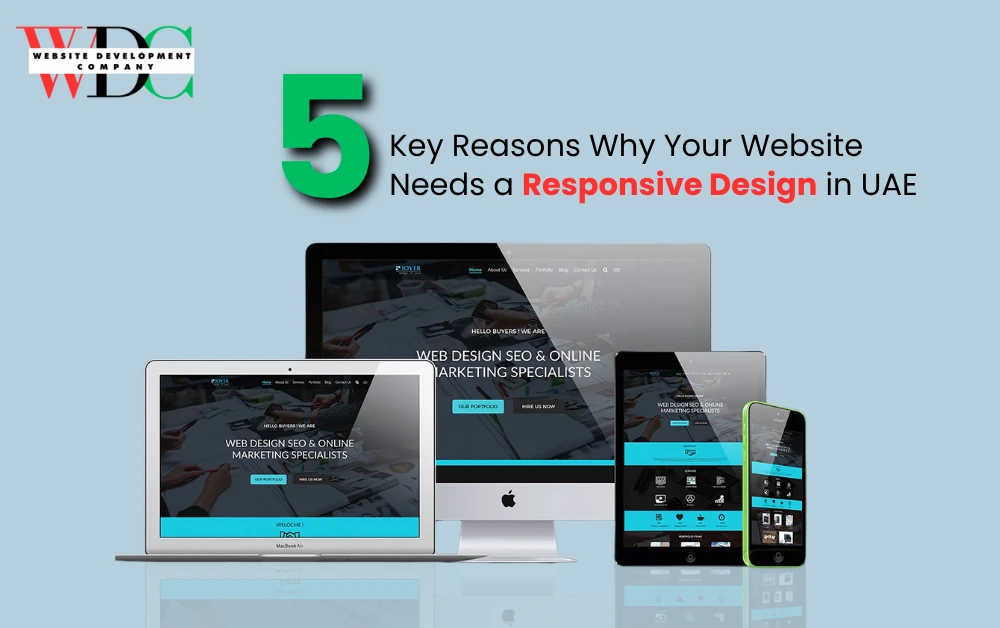Building a website is one of the most important investments a business can make in today’s digital-first landscape. Your website acts as your brand’s storefront, salesperson, and first impression—all rolled into one. Yet, despite the growing accessibility of website-building tools and expert agencies, many businesses still fall into costly traps that sabotage their online success.
A visually attractive design is just one part of the equation. Behind the scenes, every detail—from speed and structure to content and code—impacts how users engage with your site & how search engines rank it. To help you avoid the common pitfalls, let’s explore the four most frequent website development mistakes and how you can fix them before they hurt your growth.

1. Ignoring Mobile Responsiveness
The Mistake:
Many businesses still build websites that look amazing on desktop but fall entirely apart on smartphones or tablets. With mobile users accounting for more than 60% of global web traffic, this is a serious oversight.
A non-responsive website leads to:
- Frustrating user experiences
- Higher bounce rates
- Lower engagement and conversions
- Negative SEO impact due to poor mobile usability
How to Avoid It:
- Use a mobile-first design approach from the beginning.
- Choose responsive themes or templates that auto-adjust to different screen sizes.
- Test your website on multiple devices—phones, tablets, laptops, and large desktops.
- Use Google’s Mobile-Friendly Test to know how your site performs on smartphones.
- Avoid elements that don’t work well on mobile (like hover menus or large pop-ups).
Responsive design isn’t just about screen adjustment; it’s about ensuring users can navigate, interact, and convert smoothly—regardless of the device they’re using.
2. Slow Page Load Speed
The Mistake:
Nothing drives handlers away faster than a slow-loading website. Even a 1-second delay in page load time can reduce conversions by up to 7%. In today’s fast-paced world, users expect instant access, and slow sites don’t cut it.
Common causes of poor performance:
- Heavy, uncompressed images
- Too many third-party scripts
- Bloated code or unused plugins
- Poor-quality hosting servers
How to Avoid It:
- Compress all images using tools like TinyPNG or WebP format.
- Choose a lightweight, performance-optimized theme.
- Minimize JavaScript & CSS files by combining and minifying them.
- Use browser caching & a Content Delivery Network (CDN) like Cloudflare.
- Host your website on a reliable, fast server, preferably one with data centers close to your target audience (for UAE businesses, look for local or GCC-region hosting).
Also, use Google PageSpeed Insights or GTmetrix to test your performance and fix bottlenecks regularly.
3. No Clear Call-to-Actions (CTAs)
The Mistake:
You’ve built a great-looking website, but visitors don’t know what to do next. Should they call you? Buy something? Subscribe to a newsletter? When a site lacks clear direction, users often leave without taking action.
CTAs are what convert visitors into leads, customers, or subscribers. Without them, your website is just a brochure.
How to Avoid It:
- Place bold, clear CTAs on every page, especially the homepage, landing pages, and blog posts.
- Use action-driven phrases like “Get a Quote,” “Book a Demo,” “Shop Now,” or “Start Free Trial.”
- Make your CTA buttons stand out visually (color contrast, size, and placement).
- Don’t confuse users—limit each page to one or two primary goals.
- Ensure your contact forms are short, functional, and easy to use on all devices.
Think of CTAs as signposts that guide users to the finish line. Without them, even your most engaged visitor might walk away empty-handed.
Related read:- The Future of Website Development in Dubai: Emerging Trends for 2025
4. Neglecting SEO Best Practices
The Mistake:
You’ve launched your new site… but no one can find it on Google. That’s because SEO (Search Engine Optimization) wasn’t part of your development process.
Neglecting SEO means:
- Your site might not rank for your business keywords.
- Search engines may not understand or crawl your content.
- You miss out on valuable organic traffic.
How to Avoid It:
- Use proper headings (H1, H2, H3) to structure content.
- Add keywords in page titles, meta descriptions, & URLs.
- Write alt text for all images to boost search visibility.
- Submit an XML sitemap in Google Search Console.
- Use schema markup for products, services, or FAQs.
Additionally, avoid keyword stuffing or using duplicate content. SEO isn’t about tricking the algorithm—it’s about building clarity, trust, and authority over time.
Bonus Tip: Failing to Plan the User Journey
Although not a development mistake per se, failing to map the user journey during website planning can hurt your entire online strategy. Your website should be built around your audience’s behavior—anticipating what they need at each stage and guiding them accordingly.
How to Fix It:
- Create clear navigation menus with categories relevant to your offerings
- Design intuitive page flows—from homepage to product/service to checkout/contact
- Include breadcrumbs, FAQs, testimonials, and trust signals throughout the site
- Use heatmap tools like Hotjar to study how users interact with your site & adjust accordingly
Final Thoughts
Your website is the key to your digital presence. But even with the best intentions, common development mistakes can cost you traffic, leads, and credibility. By proactively addressing these issues—mobile responsiveness, page speed, CTA clarity, and SEO—you can create a robust platform that delivers long-term results.
Whether you’re building your website in-house or hiring an agency, make sure you prioritize performance, user experience, and scalability from the start. Remember, a fantastic website doesn’t just look good—it works hard to grow your business every day.
Frequently Asked Questions
Can I fix these website issues after launch?
Yes! Most common mistakes can be fixed post-launch, but it’s more cost-effective to address them during development.
How often should I update my website?
Keep your platform, themes, and plugins updated monthly. Refresh content regularly to maintain SEO rankings and user engagement.
Are website plugins bad for performance?
Not all, but too many plugins—especially outdated or unoptimized ones—can slow your site or pose security risks.
What is the difference between a static and a dynamic website?
A static website shows the duplicate content to all users, while a dynamic website displays updated, interactive content based on user behavior.
Is it necessary to have a blog on my business website?
A blog helps drive organic traffic, improve SEO, and establish authority in your industry—but it’s not mandatory for all businesses.







